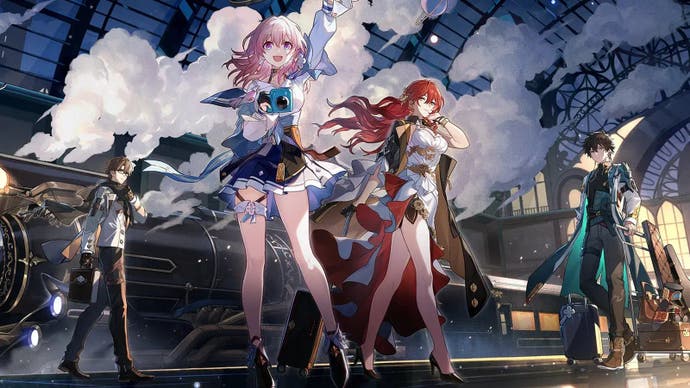Honkai: Star Rail review - more than Genshin Impact in space
First class.
It's a sign of how popular Genshin Impact has become that Honkai: Star Rail is discussed more like its sequel than the fourth entry in the Honkai series. Along with a complete tonal 180 from the 'Breath of the Wild clone' derison Genshin Impact drew at launch, these constant comparisons can understandably irk some Honkai Impact 3rd players, but it's really tough to separate the two due to how similar they are. Cut out all of the annoying grinding and open world from Genshin, then whack it in a blender with turn-based combat and a squeeze of Honkai lore, et voilà, you've made a Star Rail smoothie. Not exactly a healthy one, when considering your precious gaming time, but healthier than falling off another cliff because your stamina bar depleted again on your third day farming for character materials.
So is that it? Is it just a sci-fi Genshin that cuts out the more time consuming activities? A big part of me wants to say yes. You could put a screenshot of the two side-by-side and it'd be tough to tell them apart, from similar character models and environments, right down to the UI. However, that description feels like it's doing a disservice to Star Rail's delightfully goofy humour, charismatic voice cast, and truly magnificent combat.
It's not just a sci-fi take on the Genshin formula, but you'll certainly have a helpful cheat sheet in understanding how the systems work if you've been playing Genshin Impact for a while. There's not really a similar benefit from having played previous Honkai games as far as I could tell, as Star Rail is set in an alternate universe with different versions of some returning characters. I'm sure it's fun for Impact 3rd fans to see Bronya and Seele reunite again, but I still enjoyed exploring their new story as a relative newcomer to the series.
I actually enjoyed a lot of the story, despite Star Rail's best efforts to stop me. On the surface it's typical video game nonsense involving a destructive force known as a Stellaron (lovingly referred to as the Cancer of All Worlds), placed inside your main character, the Trailblazer, who has a bad case of anime-amnesia. You soon join the Astral Express crew on their space train in an intergalactic mission to contain Stellaron disasters wherever they arise. The dedication to world-building is clear, and the personal stories of most characters actually managed to pull me in despite all the clichés, but the way that key story moments and concepts are told is often underwhelming. Why give one sentence explanations for important details, yet spend eight paragraphs overexplaining the simplest plot twist? Add the regular fade-to-black moments with 'You do this thing' or 'You explained what happened' text instead of a basic cutscene or dialogue prompt, and it can sometimes feel a little soulless. A space opera with all the drama, but none of the excitement.
The charming voice cast is a soothing balm during these more painful scenes, and a big reason why the goofy humour tends to land so well. Skyler Davenport, the English voice actor who plays March 7th (don't ask), is a particular stand-out. March 7th is a typical cutesy anime girl who accompanies you throughout most of the game, so she could have easily become a mascot for annoyance, but with Davenport's delivery she actually comes across as a silly, endearing friend who makes the perfect double act with grumpy Dan Heng, another Astral Express companion. While the characters often follow certain overdone archetypes, the talented cast help make them feel fresh.
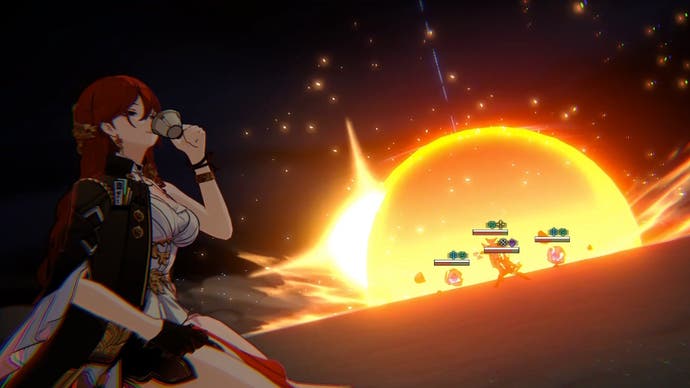
Something not so fresh is the lack of oomph in the environments, which seems like a consequence of having to run on mobile. The traditional Chinese-inspired 'silkpunk' design of the Xianzhou Luofu ships you explore later on does its best at injecting a little style into your journey across the stars, but not much. The music certainly helps create an inviting atmosphere where the design doesn't, offering a delectable smorgasbord of piano melodies, soft chants, and harsh electronic beats, depending on where you're exploring. There's even a pop-rock song I've managed not to get sick of, despite choosing it as the only track to play while I'm on my magic space train in between missions.
It's clear the feel of playing Star Rail is prioritised over its look, and by far the best feeling comes from the superb combat. Turn-based fighting is more of a tough sell these days, but along with helpful double speed and auto-battle toggles, Star Rail has managed to combine Elemental and traditional JRPG class systems, somehow making it fun even when you fail.

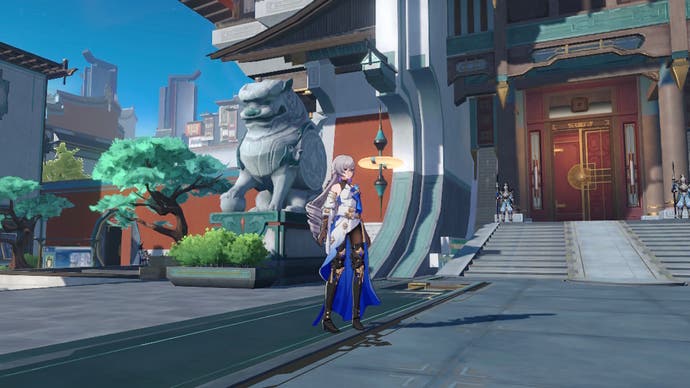
Every character has an Element and a Path, with their Element making them strong against certain enemies, and their Path locking them into a certain role. If you bring a character like Asta in your party, for example, you can lower the break bar of enemies weak to fire easier, knocking them down and opening them up to more damage. This is helpful, but it isn't her main role, as Asta is on The Harmony Path, used to buff allies. Her speciality is increasing the speed of your team so you can have more turns. Asta is useful, but there are 22 characters in Honkai: Star Rail at launch, each with their own Element and Path combinations, with unique abilities only they can use.
In the later stages of the game, you're going to come up against elite enemies and bosses that require strategic thinking about your party composition, and it's so satisfying when you solve these combat puzzles, because there isn't one universal solution. You can beat a boss by bringing four damage dealers and nuking them before they get a chance to wipe out your team, while I can beat the same boss by bringing one DPS main, a healer, and two supports. The possibilities aren't endless, but it feels like they are when everybody has a different group of characters to choose from.
There aren't too many difficult bosses as long as you're levelling characters up, so the most fun to be had with combat experimentation is in the optional Forgotten Hall and Simulated Universe challenges. The Forgotten Hall tasks you with defeating enemies under a certain number of turns, getting harder as it goes on, forcing you to think extra carefully about party lineups and every individual attack. The Simulated Universe mixes things up and adds a massive rogue-like mode, granting randomised 'Blessings' after defeating each enemy, like bonus shields, or a higher chance to freeze enemies. You get to choose from three Blessings each time, and there's a permanent ability tree, giving some control over how buffed you are when reaching the boss at the end of each world.

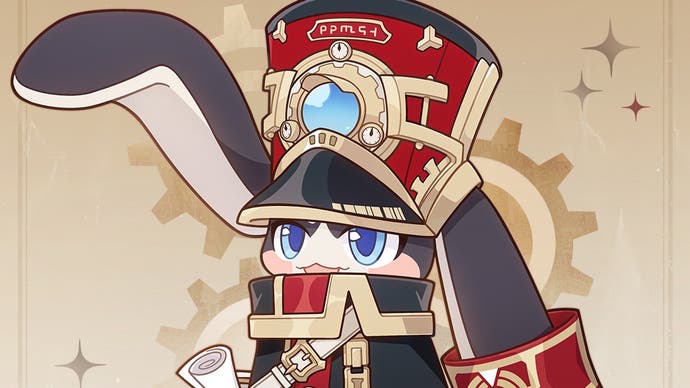
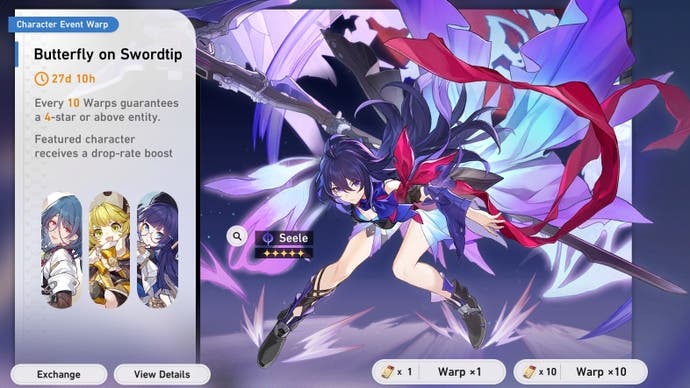

It's these two gameplay modes that might have you turning to Star Rail's gacha loot boxes in the hopes of pulling a 5-Star character to help push through some of the later levels, but from my experience, this isn't necessary. Spend your free currency on them, sure - it's never a bad thing to have more party options - but there's no need to spend money on character or weapon Banners to progress. It really is all about how you play an individual and what teams you build around them, not their base stats. A shiny new 5-Star can make things easier, but they're not going to help if you don't know how their individual abilities work with your current roster.
It may seem counterintuitive that there's so much focus on 5-Stars when they're not actually needed, but that's the great magic trick Genshin Impact has been pulling off for years now. Driving up hype for a new character on social media certainly helps, but it's the attention to detail in designing fresh playstyles that peaks the interest of those partial to experimenting with the combat, and it seems Honkai: Star Rail is headed down the same road. The very first limited-time character Banner is Seele, who is on The Hunt Path, meaning she should be used in single-target encounters. Except Seele's passive Talent lets her take another turn and buffs her attack if she kills an enemy, making her good in multi-target scenarios as well. No other character plays like this, and therein lies the appeal of spending your currency on Seele. Well, that, and you want her on your team because you like her. Never underestimate the appeal of pulling for a waifu or husbando in a gacha game, as I'm sure HoYoverse's yearly earnings can attest to.
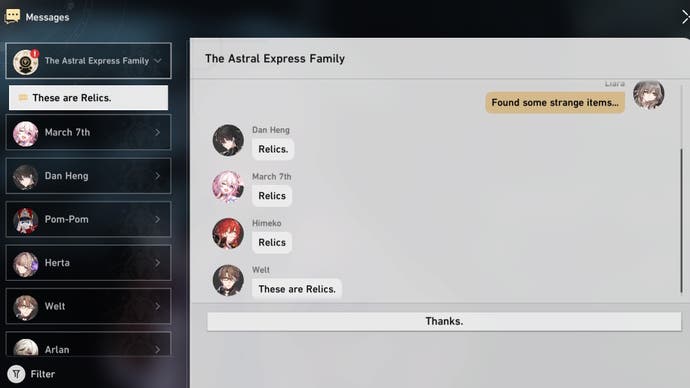

Star Rail also provides for those who don't have an interest in combat and just want to hang out with their favourites. Companion Missions delve deeper into backstories and allow them to board the Astral Express when completed, but my favourite feature is the random text messages. Your phone is usually a side quest machine, but there are occasional, inconsequential conversations that pop up. Somebody might be feeling stressed at work, or wants your opinion on their photography skills, or just messages to show off their newest chibi sticker. It adds a welcome camaraderie in between the high-stakes story and resource farming, opening up a different side to some characters, or just providing a laugh or two.
All of this, and it's just the first chapter in your Trailblazer's journey. More characters, story, side quests, planets, and enchanting music await in Star Rail's future with each new patch. Maybe the story's execution will fall flat at times, and the environments might look a little bland, but with the promise of a text from your buds around the corner, and delightful combat challenges to suss out, I can't help but get excited for the Astral Express's next destination. Just a sci-fi Genshin Impact? Maybe to some, but I like my Star Rail smoothie, even if it tastes familiar.
